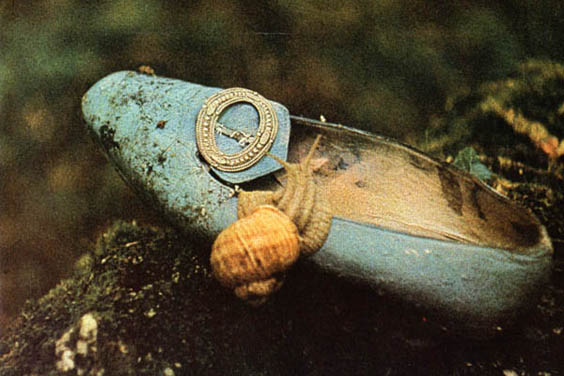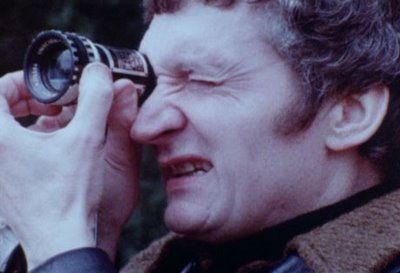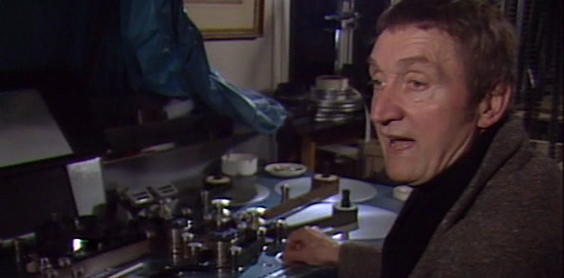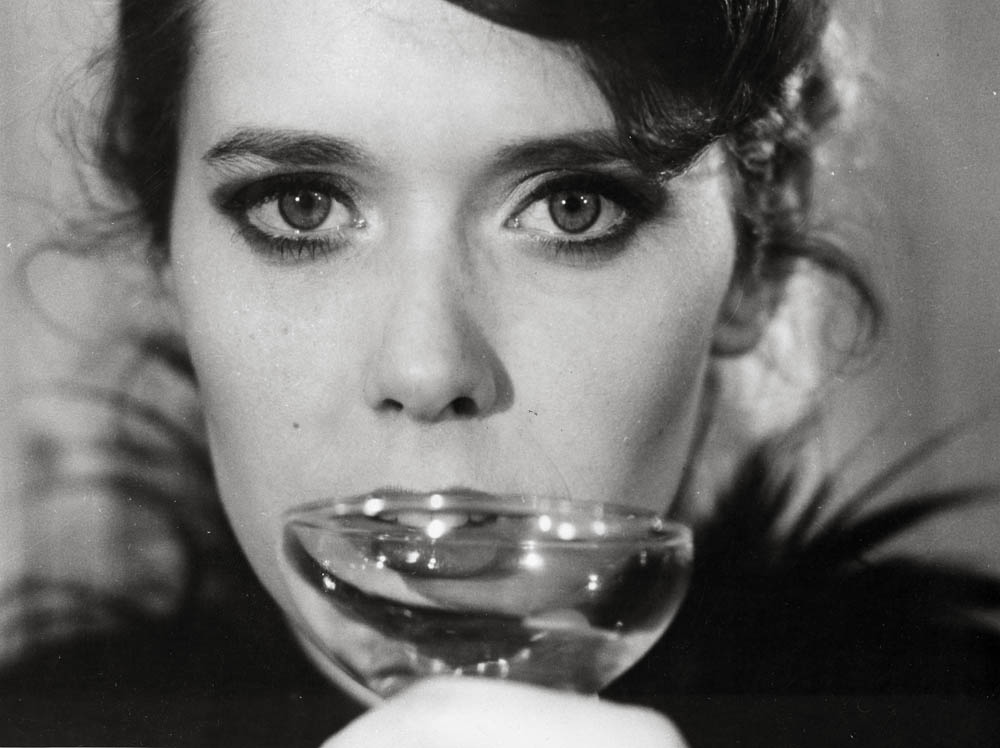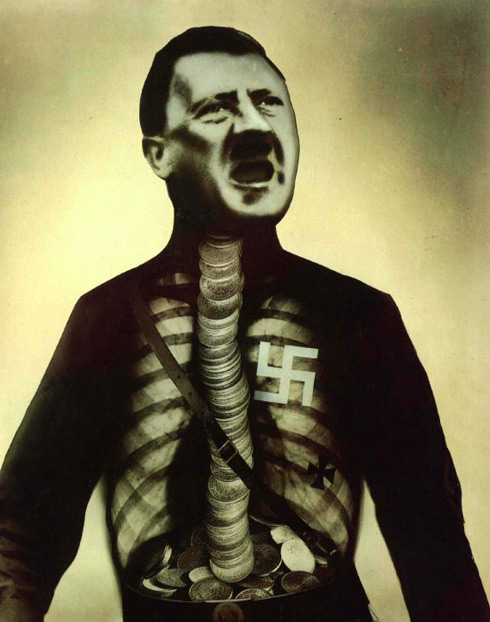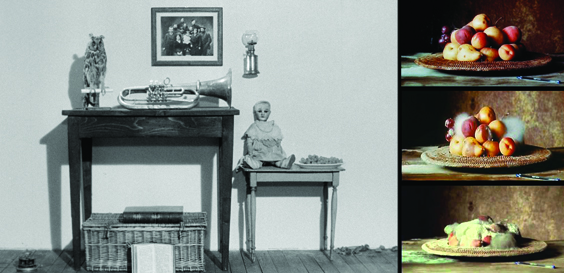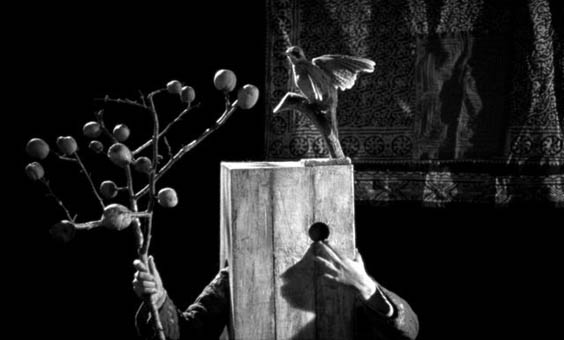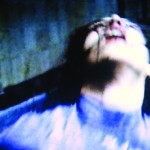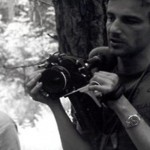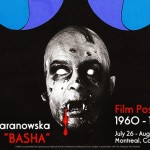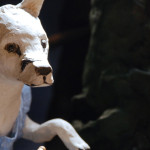BOUDOIR BESTIARY
Film Scholar Daniel Bird Talks About the Weird World of Walerian Borowczyk
As part of the zeitgeist surrounding the impending release of Arrow Video’s elaborate box set of the films of Polish filmmaker Walerian Borowczyk (1923-2006), a series of events were mounted all over London beginning in May of this year to celebrate this substantive reappraisal of a filmmaker often neglected outside of the longtime mail-order set. In a joint effort with the Kinoteka Polish Film Festival, the BFI Southbank hosted a film retrospective of Borowczyk’s major works (where I finally saw Dallesandro/Kristel teamup LA MARGE for the first time), the ICA hosted an exhibit of Borowczyk’s graphic artworks and sculptures, and an avant garde concert in a crowded café saw imagined Borowczyk scores performed live. The city was literally bursting with the playful energy of this iconoclastic filmmaker. And at that venerable institution known as The Horse Hospital, nestled within a papery cavern made of Borowczyk’s rare film posters, was film scholar (and producer of the box set) Daniel Bird’s documentary OBSCURE PLEASURES: A PORTRAIT OF WALERIAN BOROWCZYK (2013), an expanded version of an interview filmed with Borowczyk during the post-production of what would be his last animated short film, SCHERZO INFERNAL (1984).
We spoke to Bird about making a film out of this revealing and confrontational interview, about Borowczyk’s legacy and Bird’s own role in bringing unsung Eastern European filmmakers some long-deserved critical attention.
The main crux of the film is an interview Borowczyk gave in 1984. What was the original context for this interview, how did you find it, and what were the steps you had to go through legally to be able to manipulate and use it to make a new film?
The original context of the interview was a program about the Annecy Film festival (directed by Keith Griffiths) which was part of the Visions TV series (produced by John Ellis) broadcast on Channel 4. Peter Hames, who has written extensively on Czech and Slovak Cinema, gave me a typescript of the full interview back in 1996. (Peter was the programmer of my local Film Theatre in Stoke-on-Trent, where I first got to see Borowczyk’s short films, along with those of Lenica and Svankmajer). As is usually the case, only a tiny fragment of the interview was used in the program. Nevertheless, I think it is a unique document in that it is one of the few instances where Borowczyk is on camera answering a variety of questions about animation, the graphic arts, ‘Polishness’ and sex. I thought it would be a good idea to edit the rushes into a rounded portrait. John kindly gave me permission to access the rushes from the BFI National Film Archive and I had them transferred.
How much of the original interview was used, and to what extent was the line of questioning re-organized? I ask because when talking about animation, he is seated, comfortable, leaning on a table, whereas when he is asked about his erotic films, he is standing, in a more exposed fashion, against a white wall, and the questions take on an accusatory tone. It almost seems like a different interview because there is such a sharp contrast tonally and visually.
First, it is important to say something about the context in which I edited the film. During the last couple of years I have been working on a project involving the digital transfer and restoration of Borowczyk’s short films and early features. These transfers have been financed by Arrow Films, with support from the Polish Cultural Institute in London with additional support from contributors to a Kickstarter campaign. From the outset, these restorations were envisaged as part of a box-set of Blu-rays and DVDs. While I think both IMMORAL TALES and THE BEAST are wonderful, I was concerned that they would overshadow Borowczyk’s early films, particularly the shorts. Therefore, Michael Brooke (with whom I co-produced the series) and I, set about devising supplementary features as well as a book designed to re-introduce Borowczyk, so to speak. It is not the case that Borowczyk’s films can be divided up into ‘animations’ and ‘sex films’ – these are just different facets of the same artist. This ‘portrait’ of Borowczyk is just one of the supplementary features designed to put forward the case. For me, it was essential to provide a platform for Borowczyk to talk about his films himself. To answer your question, In terms of how much of the interview was used, I would say about eighty percent. Besides the discussion of Annecy, the only section which was not used was a passage about computer animation. While fascinating in itself, it just didn’t fit. About the set up of the interview, I do not know why the questions about sex were filmed the way that they were. That said, I quite like the abrupt shift. To focus on the sexual aspect of Borowczyk is a bit like focusing on violence in Peckinpah’s cinema – yes, it is what made him infamous, but it was not just what he was about.
Keith Griffiths who was the offscreen interviewer is known as a producer both of the British film RADIO ON and some Brothers Quay films and Guy Maddin short films (assuming it’s the same Keith Griffiths), so presumably he has an understanding of Borowczyk’s work – does he call Borowczyk a pervert to rile him deliberately?
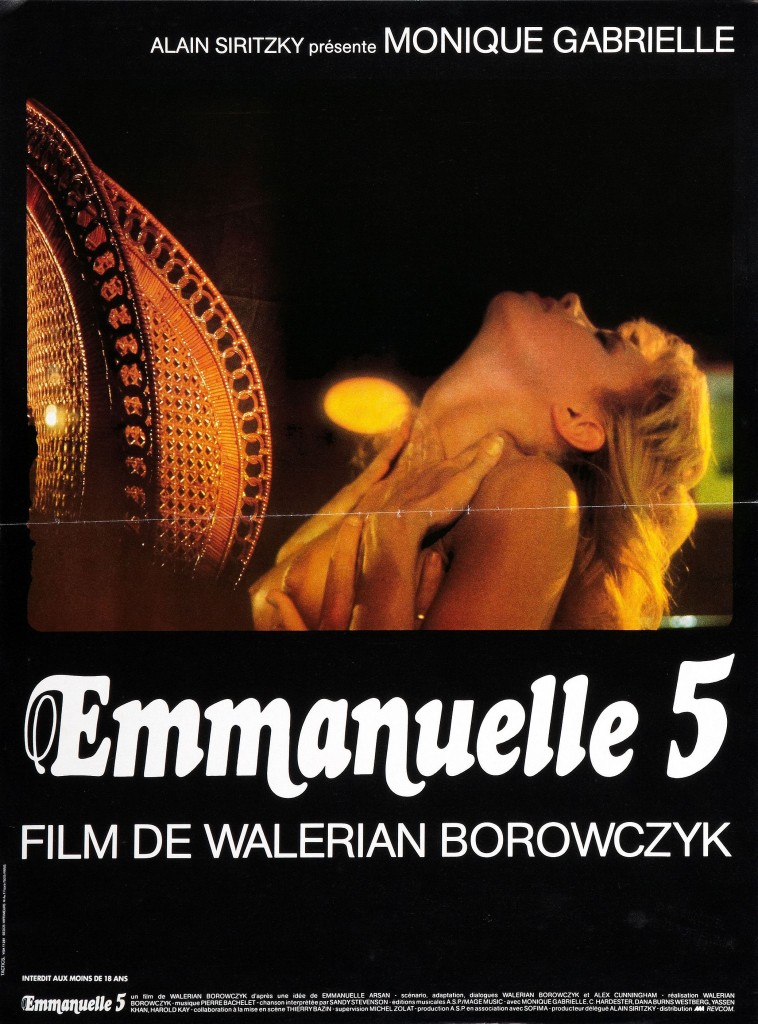 Yes, it is the same Keith Griffiths. Keith knows Borowczyk’s cinema, particularly the earlier films, like the back of his hand. I have read that ROSALIE is one of his favourite short films. In a way I discovered Borowczyk because of Keith. I got to see Borowczyk’s films as part of a program of shorts accompanying the release of Svankmajer’s FAUST. While Keith wrote the questions for the interview and was present, he didn’t conduct it. I think they French guy asking the questions was being, as you say, deliberately provocative. Keith, I am quite sure, was at the Royal College of Art with the Quay Brothers and Cherry Potter when they discovered Borowczyk. Ray Durgnat was teaching there at the time, and, being Swiss, translated the issue of Cahiers du Cinéma which was dedicated to Borowczyk and GOTO, L’ILE D’AMOUR. During the 1980s, Keith, through both documentaries he made himself and films he produced (Svankmajer, the Quays), did much to present animation as an interface between art and film, particularly in the UK. Around the time of the interview there was an attempt to reclaim Borowczyk. Cherry Potter, who was then teaching scriptwriting at the NFTS, had written a script called ANCESTRAL MANSION, which the BFI Production Board was going to produce. For a while Kate Bush was attached to play the lead role. Instead, the BFI, according to Cherry, reassigned the money to an Alan Bleasdale script, and Borowczyk made EMMANUELLE 5… So for people like Keith, the Quays and also artists like Andrzej Klimowski, Craigie Horsfield and John Goto (yes, he liked the film so much he changed his name), Borowczyk showed a way for fine artists to work in film. In this respect, I think he was important, and also resumed that period of cinema when artists like Léger saw the canvas and screen as interchangeable. It is customary for people to lament Borowczyk’s career trajectory, but it is interesting to compare his path to that of, say, Sam Taylor-Wood and Steve McQueen. Taylor-Wood is now directing FIFTY SHADES OF GREY and Steve McQueen has cornered the market when it comes to exquisitely crafted, profoundly humourless, middlebrow exploitation films like SHAME. This, for me, is selling out.
Yes, it is the same Keith Griffiths. Keith knows Borowczyk’s cinema, particularly the earlier films, like the back of his hand. I have read that ROSALIE is one of his favourite short films. In a way I discovered Borowczyk because of Keith. I got to see Borowczyk’s films as part of a program of shorts accompanying the release of Svankmajer’s FAUST. While Keith wrote the questions for the interview and was present, he didn’t conduct it. I think they French guy asking the questions was being, as you say, deliberately provocative. Keith, I am quite sure, was at the Royal College of Art with the Quay Brothers and Cherry Potter when they discovered Borowczyk. Ray Durgnat was teaching there at the time, and, being Swiss, translated the issue of Cahiers du Cinéma which was dedicated to Borowczyk and GOTO, L’ILE D’AMOUR. During the 1980s, Keith, through both documentaries he made himself and films he produced (Svankmajer, the Quays), did much to present animation as an interface between art and film, particularly in the UK. Around the time of the interview there was an attempt to reclaim Borowczyk. Cherry Potter, who was then teaching scriptwriting at the NFTS, had written a script called ANCESTRAL MANSION, which the BFI Production Board was going to produce. For a while Kate Bush was attached to play the lead role. Instead, the BFI, according to Cherry, reassigned the money to an Alan Bleasdale script, and Borowczyk made EMMANUELLE 5… So for people like Keith, the Quays and also artists like Andrzej Klimowski, Craigie Horsfield and John Goto (yes, he liked the film so much he changed his name), Borowczyk showed a way for fine artists to work in film. In this respect, I think he was important, and also resumed that period of cinema when artists like Léger saw the canvas and screen as interchangeable. It is customary for people to lament Borowczyk’s career trajectory, but it is interesting to compare his path to that of, say, Sam Taylor-Wood and Steve McQueen. Taylor-Wood is now directing FIFTY SHADES OF GREY and Steve McQueen has cornered the market when it comes to exquisitely crafted, profoundly humourless, middlebrow exploitation films like SHAME. This, for me, is selling out.
Borowczyk’s ROSALIE on Youtube:
What were your specific additions/manipulations to the original film – did you add in the excerpts from Borowczyk’s various films?
Yes, I merely sought to find appropriate clips from Borowczyk’s filmography to illustrate what he was saying.
In the interview, Borowczyk claims to not really be influenced by much Polish art. To what extent do you believe this is the case? Both of them seem to say there is no surrealist tradition in Poland, that the art is more folkloric or pastoral, but if you look at the graphic arts from at least the 1960s onward – the famous Polish posters – that obviously seems to be untrue.
I don’t think he was being deliberately evasive. There is a tendency to shoehorn artists into the traditions of their own country. Of course, these are influences, but they are not the only influences. Borowczyk, for example, trained in the post-impressionist style, and his satirical drawings are clearly influenced not so much by socialist realism as Daumier. Also, John Heartfield’s photo-montage clearly plays a role in some of his posters, as does Max Ernst. Norman McLaren is an obvious influence on his early films with Lenica, and, as I have already mentioned, Léger had a strong presence in Polish art during the mid 1950s. Borowczyk is right in saying that there is no formal surrealist tradition in Poland, like there was in Czechoslovakia. However, Polish art is often surrealistic. Witkacy, Schulz and Gombrowicz are the names which are the most important in this respect. Of course, Poland arguably had the strongest tradition of posters in Eastern Europe during the late 1950s and 1960s, however, I think the posters from all Eastern Bloc countries are very strong during this period. I think this was the result of three factors. First, the relative freedom of the ‘thaw’ period, second, an economic poverty which resulted in an aesthetics of poverty (not just in posters, but also films and theatre), and third, that these artists were not trained as graphic designers, but painters – they were familiar with not just the surrealists, but all sorts of other ‘-ists’. Borowczyk did, however, feel comfortable being associated with surrealism in France. He regularly adapted the work of Pieyre de Mandiargues, for example, and made a film about the Serbian painter, Ljuba (L’AMOUR MONSTER DE TOUS LES TEMPS – see video below). It is also worth remembering that the word, surrealism, was coined by Apollinaire, who was of Polish decent.
That said, I find his films have much in common with the work of Roland Topor – I haven’t looked this up, but did Topor and Borowczyk have any crossover?
I think they were ‘fellow travellers’, rather than having any actual crossover.
This short film DIPTYCH – I have managed to see this film three times in the last couple weeks, and it seems the most incoherent and nonsensical of all his works that I have seen. Almost like a fake parody of an art film made by someone who hates art films. And yet in the interview he refers to this as a “children’s film”! I thought that was hilarious. Can you explain this film to me?
DIPTYCH is one of my favourites. I don’t think it is incoherent or nonsensical at all – but it is a puzzle. I think they clue is in the title, Diptych. It is a film constructed of two ‘panels’. Each panel both contrasts and compliments the other, both in terms of form and content. Thanks to Eisenstein, we often think of adjoining film shots as having a dialectical relationship. I think Borowczyk pushed it a degree further, by having not just dialectical sequences, but entire films made in counterpoint. The best examples of this are his portmanteau films, like IMMORAL TALES. What I think is particularly remarkable about THE BEAST is how the farce part of the film interlocks with the dream sequence – it is really very interesting, formally. In another documentary I made about the shorts, Borowczyk’s producer, Dominique Duvergé, tells the story about how Borowczyk filmed the first panel, about the old man and the dogs, for posterity. He loved this old man, who lived on his own, whose words were almost indecipherable. At first he didn’t know what to do with the footage, and it was some time before he came up with the idea of an accompanying montage of cultivated plants (instead of wild foliage) and playing kittens (instead of working dogs) to the sound of a Bizet aria (instead of direct sound). I think the film is particularly interesting when you think of what was happening in expanded cinema around the same time – not to mention Warhol’s CHELSEA GIRLS with its multi-screens. Indeed, you could easily conceive of DIPTYCH as a video installation, with the two panels projected simultaneously, just as Renaissance could be projected on a loop.
Nevertheless, I think Borowczyk himself was wary of the pretensions associated with, for example, concrete cinema. He tended not to like films when the conceptual aspect overwhelmed the sensual element (he himself was often guilty of the reverse). For example, when he was on a jury at a film festival in Brussels, he championed Snow’s WAVELENGTH, Scorsese’s BIG SHAVE and Steve Dwoskin films. On the other hand, he regarded B.S. Johnson’s PARADIGM as the worst film ever made! I think he would have preferred Buster Keaton over McQueen’s DEADPAN (another Griffiths production), and I think RENAISSANCE is a much stronger work than Taylor-Wood’s STILL LIFE, which explores similar territory. I think Borowczyk would have appreciated Bill Morris’ DECASIA and the very last time I spoke to him was to recommend two Animate! productions, David Shrigley’s WHO I AM AND WHAT I WANT and Run Wrake’s RABBIT. About describing DIPTYCH as a children’s film – Borowczyk claimed he made a film for children featuring kittens – and, I am quite sure he was referring to DIPTYCH. Why not? There is a strange convergence between the avant-garde and infancy, let’s say. I have screened Chytilová’s DAISIES to kids and they love it – two girls who do nothing but make fun of people and trash things – what’s not to like? Intellectually, this is exactly what Gombrowicz is about, especially his first novel, FERDYDURKE (1937).
How are Borowczyk’s films looked upon in Poland, and has that changed over time?
Traditionally, I think he was valued by his peers – painters like Jan Tarasin and Jerzy Tchórzewski, the Różewicz brothers, writers like Mrożek, critics like Kałużyński. However, most critics deemed him as the less talented half of the Borowczyk-Lenica pairing – to the point where they started describing their films together as Lenica-Borowczyk – which is just wrong. That’s not how their names are credited on the films, Lenica himself acknowledged that Borowczyk was proposed the initial ideas for many of their films together. And, let’s face it, I love Lenica’s graphics and films, but he is very much indebted to Saul Steinberg. In short, I think he was a great poster designer, but ultimately Borowczyk is, for me, a more original artist. Today, things are changing. A new generation of critics are rediscovering Borowczyk afresh – Michał Oleszczyk, Kuba Mikurda, Kamila Kuc – there are new books of essays and documentary films underway. Officially, however, he is still something of an outlaw. Poland, remember, is a Catholic, conservative country.
Bertrand Mandico’s 2011 film BORO IN THE BOX – this great experimental film is a fictional/fantasy representation of Borowczyk’s development as a director. But to my knowledge it has not played as part of any of the events surrounding the Arrow box set release which have been ongoing for over a month. Why has this film been ostracized from the very context it would be most at home in?
Mandico, along with Pacal Vimenet, curated a retrospective of Borowczyk’s films as well as an exhibition in Warsaw, back in 2008. Second, Ligia Borowczyk objected to Borowczyk’s shorts being played alongside BORO IN THE BOX. There are two good reasons for this. First, at the time there were no good copies to screen. Second, the film is not so much about Borowczyk as it is about Mandico. I don’t have a problem with that, Mandico is a great filmmaker and I am sure he is going to break through in a big way when he makes a feature film. He makes it clear that this is an imagined biography. However, I think pairing BORO IN THE BOX with Boro’s own work would have been counter productive. For a start, I think Mandico, like the Quays, while both admirers of Borowczyk, have very different aesthetics. Compared to Borowczyk, both Mandico and the Quays are very baroque – they are maximalists, whereas Borowczyk is minimalist. For Borowczyk, style is always a function of content (like in DIPTYCH), whereas in the case of Mandico and the Quays, style is the content – like INSTITUTE BENJAMENTA – the rituals of the protagonist are not ‘dance like’ – they are dances – indeed, the Quays have made a number of excellent dance films. BENJAMENTA ends with a homage of sorts to GOTO, L’ILE D’AMOUR – but they are very different films, which nevertheless share a strong sense of atmosphere – you can get lost in the worlds of both films. Also, I think Borowczyk’s real biography is, if anything, even more bizarre than BORO IN THE BOX – how many filmmakers insist on building not just their own house, but also the furniture inside?
After being so heavily involved with the championing and re-issuing of Zulawski’s back catalogue, and then Borowczyk’s, who’s next? Is there another unsung Polish director who you feel deserves an exhaustive reappraisal?
Nobody is next. To be honest, I never set out to be a film journalist, programmer, documentary filmmaker or whatever. It just seemed wrong to me that Żuławski’s films were being written off as ‘crazy’ by English speaking critics while Borowczyk was being pigeonholed as an ‘arty pornographer’. I think that picture has now changed. As for me, it is time to do something else.
****
Daniel Bird introducing OBSCURE PLEASURES at the Leeds International Film Festival, November 2013:

 October 3, 2014
October 3, 2014  No Comments
No Comments
